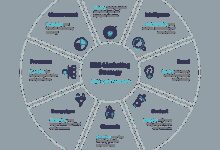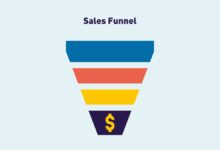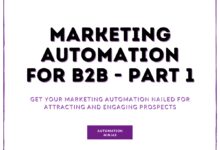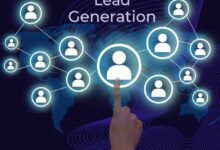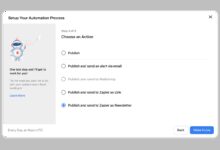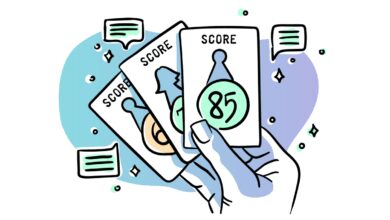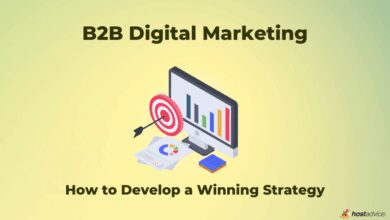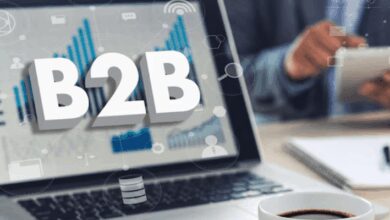B2B Lead Generation: 7 Proven Strategies to Skyrocket Growth
Generating high-quality leads in the B2B world isn’t about luck—it’s about strategy, precision, and persistence. In this deep dive, we’ll explore the most effective b2b lead generation tactics that top-performing companies use to dominate their markets.
1. Understanding B2B Lead Generation: The Foundation of Business Growth

B2B lead generation is the systematic process of identifying, attracting, and converting businesses into potential customers for your products or services. Unlike B2C, where decisions are often emotional and impulsive, B2B buying cycles are longer, more complex, and involve multiple stakeholders. This makes the lead generation process more strategic and data-driven.
What Exactly Is a B2B Lead?
A B2B lead is a business entity or decision-maker who has shown interest in your offering—whether through downloading a whitepaper, signing up for a demo, or attending a webinar. These leads are not yet customers but are in the early stages of the sales funnel.
- Marketing Qualified Lead (MQL): A lead identified by marketing as potentially interested based on engagement.
- Sales Qualified Lead (SQL): An MQL that sales teams have vetted and believe is ready for direct outreach.
- Product Qualified Lead (PQL): A user who has interacted with your product (e.g., free trial) and shown intent to upgrade.
Why B2B Lead Generation Matters
Without a steady stream of qualified leads, even the best products can fail. According to HubSpot’s State of Inbound Report, companies with strong lead generation strategies grow 2.5x faster than those without. It fuels revenue, informs product development, and strengthens market positioning.
“Lead generation is not a department; it’s the lifeblood of a growing business.” — Brian Halligan, CEO of HubSpot
2. The B2B Buyer’s Journey: Mapping the Path to Conversion
To generate leads effectively, you must first understand how B2B buyers make decisions. The buyer’s journey consists of three stages: awareness, consideration, and decision. Each stage requires tailored content and engagement strategies.
Awareness Stage: Attracting the Right Audience
In this phase, prospects realize they have a problem but may not know how to solve it. Your goal is to provide educational content that positions your brand as a trusted advisor.
- Blog posts answering common industry questions
- Infographics explaining market trends
- SEO-optimized content targeting informational keywords
For example, a SaaS company offering CRM software might publish an article titled “5 Signs Your Sales Team Needs Better CRM Tools.” This content attracts visitors actively searching for solutions.
Consideration Stage: Nurturing Interest
Now that the prospect knows they have a problem, they’re evaluating different solutions. This is where lead magnets like eBooks, webinars, and case studies come into play.
- Offer gated content in exchange for contact information
- Use email sequences to deliver value over time
- Highlight your unique selling proposition (USP)
A well-crafted case study showing how your product helped a similar company increase efficiency by 40% can be incredibly persuasive at this stage.
Decision Stage: Closing the Deal
At this point, the prospect is ready to buy but may still be comparing vendors. Your job is to make the final push with demos, free trials, and personalized consultations.
- Provide product walkthroughs
- Offer limited-time discounts or bonuses
- Share testimonials and client success stories
According to Salesforce, 68% of B2B buyers expect vendors to offer personalized experiences during the decision stage.
3. Top 7 B2B Lead Generation Strategies That Deliver Results
Not all lead generation tactics are created equal. Some deliver short-term spikes, while others build sustainable pipelines. Here are seven proven b2b lead generation strategies used by industry leaders.
1. Content Marketing with SEO Focus
Content is the cornerstone of modern b2b lead generation. High-quality, SEO-optimized content attracts organic traffic and establishes authority.
- Create long-form guides (2,000+ words) targeting buyer pain points
- Optimize for both search engines and user intent
- Repurpose content into videos, podcasts, and social media snippets
For instance, Ahrefs generates over 100,000 monthly leads through its blog by consistently publishing data-driven SEO content. Their guide on “How to Do Keyword Research” ranks #1 for thousands of search terms.
2. LinkedIn Outreach and Social Selling
LinkedIn is the #1 platform for b2b lead generation. With over 900 million users, including 63 million decision-makers, it’s a goldmine for targeted outreach.
- Optimize your profile with clear value propositions
- Engage with content posted by ideal customers
- Use LinkedIn Sales Navigator to find and connect with prospects
A study by LinkedIn found that 80% of B2B leads come from LinkedIn, making it the most effective social channel for lead gen.
3. Email Marketing with Personalization
Email remains one of the highest ROI channels for b2b lead generation. But generic blasts don’t work anymore—personalization does.
- Segment your list based on industry, role, or behavior
- Use dynamic content to tailor messages
- Automate drip campaigns based on user actions
According to Campaign Monitor, personalized emails deliver 6x higher transaction rates than non-personalized ones.
4. Webinars and Virtual Events
Webinars allow you to showcase expertise while capturing high-intent leads. They’re especially effective for complex products that require explanation.
- Choose topics that solve specific business challenges
- Invite industry influencers as co-hosts
- Follow up with attendees using automated sequences
On average, a single webinar can generate 50–100 qualified leads, according to ON24.
5. Account-Based Marketing (ABM)
ABM flips traditional lead generation on its head by targeting specific high-value accounts rather than broad audiences.
- Identify key decision-makers within target companies
- Create custom content and campaigns for each account
- Align sales and marketing teams around shared goals
Companies using ABM report 208% higher ROI than those relying on traditional methods (ABM Institute).
6. Paid Advertising (PPC & Retargeting)
While organic growth takes time, paid advertising accelerates b2b lead generation by putting your brand in front of the right people at the right time.
- Run Google Ads targeting commercial intent keywords
- Use LinkedIn Ads to reach job titles and industries
- Implement retargeting to re-engage website visitors
A well-structured PPC campaign can generate leads at a cost-per-lead (CPL) as low as $20–$50, depending on the niche.
7. Strategic Partnerships and Referral Programs
Partnering with complementary businesses can open doors to new markets and trusted introductions.
- Co-host events or co-create content
- Offer incentives for referrals
- Leverage existing client networks for warm introductions
Referral leads have a 30% higher conversion rate than other types of leads (Zendesk).
4. Tools and Technologies for Scalable B2B Lead Generation
Manual lead generation doesn’t scale. To stay competitive, you need the right tech stack. Here are essential tools that power successful b2b lead generation campaigns.
CRM Systems: Centralizing Lead Data
A Customer Relationship Management (CRM) system like Salesforce or HubSpot is the backbone of any lead generation operation. It tracks interactions, automates follow-ups, and provides insights into lead behavior.
- Track lead sources and conversion rates
- Set reminders for follow-up calls
- Integrate with email, social, and ad platforms
Marketing Automation Platforms
Automation tools like Marketo, Pardot, or ActiveCampaign allow you to nurture leads without manual effort.
- Send targeted emails based on user behavior
- Score leads based on engagement
- Trigger actions when leads hit certain milestones
For example, if a lead downloads a pricing guide, automation can trigger a follow-up email with a case study and a calendar link to book a demo.
Lead Intelligence and Enrichment Tools
Tools like Clearbit, LinkedIn Lead Gen Forms, and Hunter.io help you gather accurate contact information and enrich lead profiles.
- Find email addresses associated with company domains
- Verify data accuracy before outreach
- Gain insights into company size, tech stack, and funding
Accurate data reduces bounce rates and increases response rates by up to 50%.
5. Measuring Success: Key Metrics for B2B Lead Generation
You can’t improve what you don’t measure. Tracking the right KPIs ensures your b2b lead generation efforts are delivering real business value.
Conversion Rates Across the Funnel
Monitor how leads move from one stage to the next:
- Website visitor to lead (e.g., form fill rate)
- Lead to MQL
- MQL to SQL
- SQL to customer
A healthy B2B funnel typically sees a 10–20% conversion from lead to MQL and 20–30% from MQL to SQL.
Cost Per Lead (CPL) and Customer Acquisition Cost (CAC)
These metrics tell you how much you’re spending to acquire each lead and customer.
- CPL = Total marketing spend / Number of leads generated
- CAC = (Marketing + Sales spend) / Number of customers acquired
According to CMO.com, the average CAC in B2B SaaS is $298, but it varies widely by industry.
Lead Quality and Sales Acceptance Rate
Not all leads are equal. High volume means nothing if leads aren’t sales-ready.
- Sales Acceptance Rate (SAR): % of leads sales teams accept as valid
- Lead-to-Customer Rate: % of leads that become paying customers
- Time to Close: Average days from lead capture to sale
Aim for a SAR above 80% and a lead-to-customer rate of at least 5–10%.
6. Common B2B Lead Generation Mistakes to Avoid
Even experienced marketers fall into traps that sabotage their b2b lead generation efforts. Here are the most common pitfalls and how to avoid them.
Targeting Too Broadly
Trying to appeal to everyone often means resonating with no one. Without a clear ideal customer profile (ICP), your messaging lacks focus.
- Solution: Define your ICP using firmographic, behavioral, and technographic data
- Create buyer personas for different stakeholder roles
- Test and refine your targeting over time
Neglecting Lead Nurturing
Only 2% of B2B leads convert on first contact. The rest need consistent nurturing to build trust.
- Solution: Develop multi-touch nurture campaigns (email, retargeting, content)
- Use lead scoring to prioritize follow-up efforts
- Deliver value at every touchpoint, not just sales pitches
Poor Sales and Marketing Alignment
When sales and marketing teams work in silos, leads fall through the cracks. Misalignment leads to wasted resources and lower conversion rates.
- Solution: Hold regular sync meetings between teams
- Define shared KPIs and SLAs (Service Level Agreements)
- Use a unified CRM platform for transparency
Companies with strong sales-marketing alignment achieve 36% higher customer retention and 38% higher sales win rates (MarketingProfs).
7. Future Trends Shaping B2B Lead Generation
The landscape of b2b lead generation is evolving rapidly. Staying ahead requires embracing innovation and adapting to new behaviors.
Rise of AI and Predictive Analytics
Artificial intelligence is transforming how we identify and engage leads. AI-powered tools can predict which leads are most likely to convert based on historical data.
- Use AI chatbots to qualify leads 24/7
- Implement predictive lead scoring models
- Personalize content at scale using machine learning
According to Gartner, by 2025, 80% of B2B marketing interactions will be managed by AI.
Increased Focus on Intent Data
Intent data reveals what prospects are researching online, giving you a window into their buying intent before they reach out.
- Use platforms like 6sense or Gombadi to track buyer intent
- Trigger outreach when a target account shows increased engagement
- Align content and ads with real-time intent signals
Marketers using intent data report a 2x increase in lead-to-customer conversion rates.
Video and Interactive Content Dominance
Static content is losing ground. Buyers now expect engaging, interactive experiences.
- Create explainer videos, product demos, and live Q&As
- Use interactive calculators, quizzes, and assessments
- Embed video directly into landing pages and emails
According to Wyzowl, 91% of businesses use video as a marketing tool, and 87% say it’s effective for lead generation.
What is b2b lead generation?
B2B lead generation is the process of attracting and converting business customers into potential sales opportunities through targeted marketing and sales activities.
What are the best channels for b2b lead generation?
The most effective channels include LinkedIn, email marketing, SEO-driven content, webinars, and account-based marketing strategies.
How do you qualify a b2b lead?
Leads are qualified based on criteria like company size, budget, authority, need, and timeline (BANT), as well as engagement level and fit with your ideal customer profile.
How long does b2b lead generation take?
The B2B sales cycle can range from a few weeks to over a year, depending on the product complexity, price point, and number of decision-makers involved.
Can small businesses succeed in b2b lead generation?
Absolutely. Small businesses can compete by focusing on niche markets, building relationships, and leveraging cost-effective digital tools like email automation and LinkedIn outreach.
B2B lead generation is not a one-off campaign but a continuous, strategic process. From understanding the buyer’s journey to leveraging cutting-edge tools and avoiding common mistakes, success lies in consistency, data-driven decisions, and alignment between marketing and sales. By implementing the seven proven strategies outlined—content marketing, LinkedIn outreach, email personalization, webinars, ABM, paid ads, and partnerships—you can build a predictable pipeline that drives sustainable growth. As AI, intent data, and interactive content reshape the future, staying agile and customer-centric will be key to long-term success in b2b lead generation.
Further Reading:
